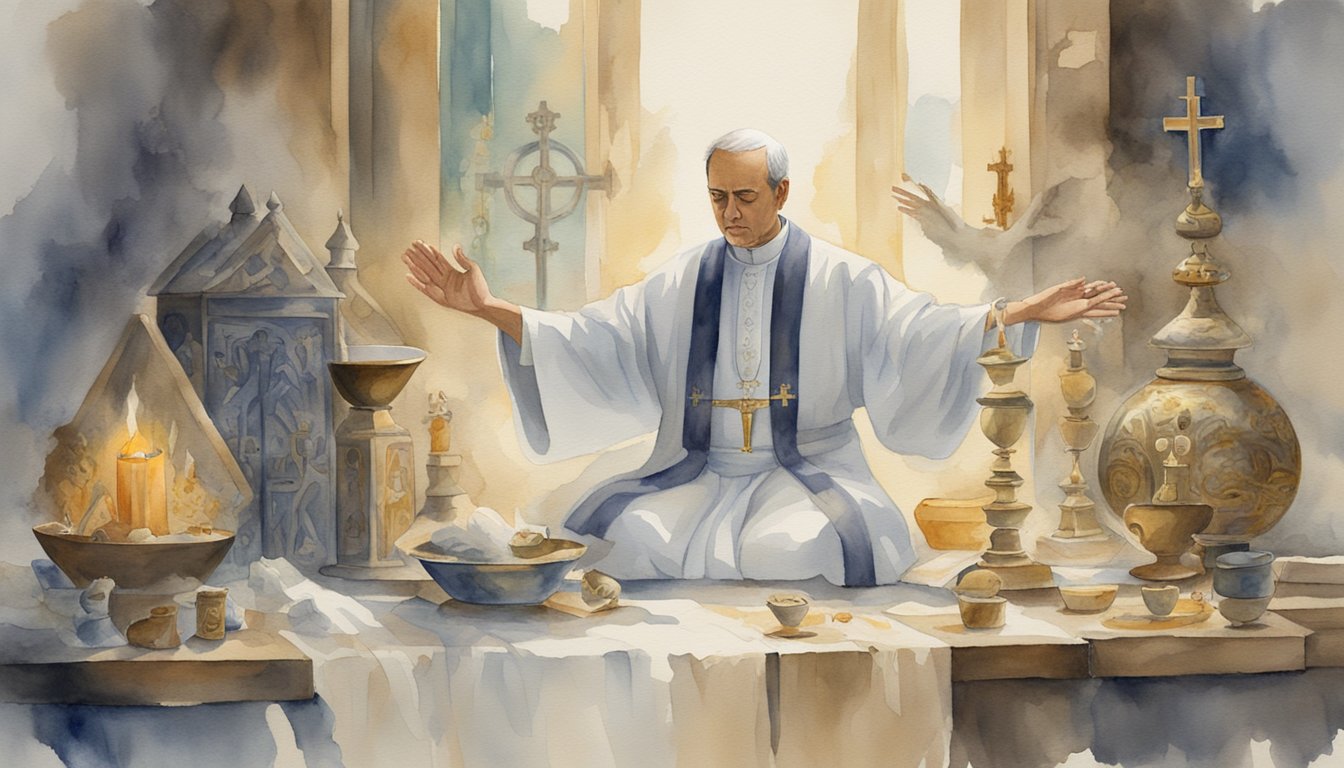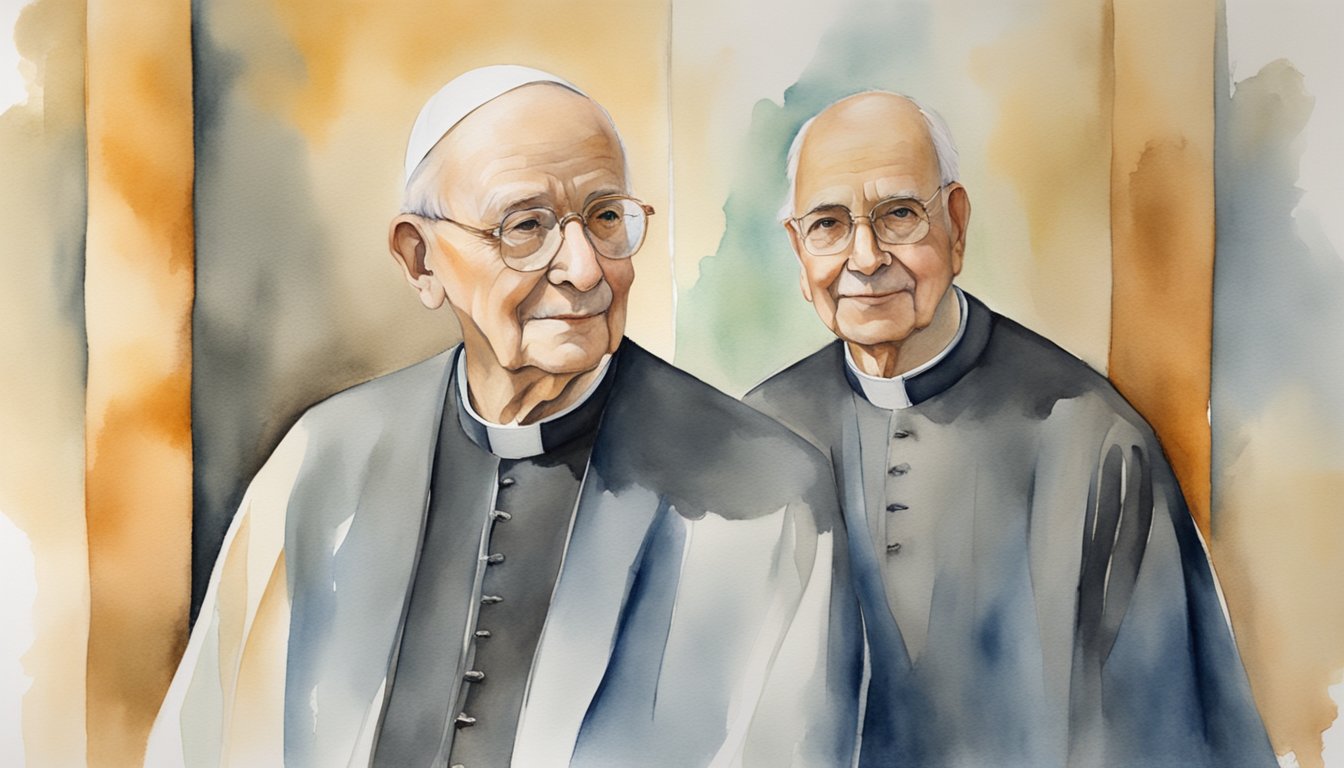Life and Ministry of Father Gabriele Amorth
Father Gabriele Amorth was a prominent Roman Catholic priest and exorcist of the Diocese of Rome who became famous for his tireless fight against demonic possession. His life’s work reached beyond traditional religious boundaries, making a significant impact on Christian beliefs about exorcism and spiritual warfare.
Early Life and Path to Priesthood
Born in Modena, Italy, Father Amorth’s journey towards the priesthood began amidst the turmoil of World War II. As a young man, he joined the Italian Resistance Movement, fighting against the fascist regime. His experiences during the war instilled in him a strong sense of justice and faith. After the liberation, he was honored with the Medal of Liberation. Eventually, he was drawn to the priesthood, and, inspired by the work of Father Giacomo Alberione, the founder of the Society of St. Paul, he joined the congregation. His life as a priest was marked by his commitment to communication and journalism, honoring the Society’s emphasis on spreading the Christian message through modern means.
Foundation of the International Association of Exorcists
Father Amorth’s work as an exorcist began under the tutelage of Father Candido Amantini, a respected exorcist at the time. In 1990, recognizing the need for an organized approach to exorcism, Father Amorth co-founded the International Association of Exorcists, a group that supports and connects exorcists worldwide. Under his guidance, the organization grew in numbers and prominence, becoming a crucial network for those involved in the ministry of exorcism within the Catholic Church.
Literary Contributions
Father Gabriele Amorth’s insights into the realm of exorcism extended to literary contributions that garnered global attention. He authored several books where he shared his experiences and thoughts on spiritual combat. In An Exorcist Tells His Story, he provides firsthand accounts of his encounters with the demonic and stresses the power of prayer in exorcism. His writings offer both theological and practical perspectives, enlightening readers about the complexities of exorcism in the modern world and demystifying the life and ministry of a Roman Catholic exorcist.
Father Amorth’s Exorcism Practice

Father Gabriele Amorth, a significant figure in the Catholic Church’s tradition of exorcism, served as an Italian Roman Catholic priest and an exorcist of the Diocese of Rome. His work as an exorcist began in 1986, and he was known for approaching each case with deep theological knowledge, bridging the gap between age-old rites and contemporary issues of faith.
Theological Perspective on Exorcism
Father Amorth viewed exorcism from a deeply theological standpoint, treating it as a sacred ministry rather than a mere ritual. He firmly believed in the presence of the devil and the reality of demonic possession, advocating for a clear understanding of the Church’s teachings on these matters. His book, “An Exorcist Tells His Story”, gives insight into his experiences and the spiritual warfare he believed he was fighting.
Public Perception and Media Involvement
The media frequently covered Father Amorth’s work, but he was critical of how exorcisms were depicted in popular culture. While “The Exorcist” brought attention to this aspect of the faith, he maintained that genuine cases were not about sensationalism but about relief for those suffering. His real-life encounters with what he believed to be the forces of evil were documented in “The Devil and Father Amorth”, capturing the public’s imagination on the topic.
Collaboration and Conflict with the Vatican
Throughout his ministry, Father Amorth sometimes experienced both collaboration and conflict with Vatican officials. He called for more trained exorcists and was instrumental in the revision of the Latin-language document “De Exorcismis et Supplicationibus Quibusdam”, a guide for the rite of exorcism. While he respected the authority of the Vatican and served under the approval of his own bishop and the Holy See, he did not shy away from asserting the need for the Church to recognize the growing demand for exorcisms and to support this ancient practice more openly.
Cultural Impact and Legacy

Father Gabriele Amorth, often referred to as the Pope’s Exorcist, has left a significant imprint on both religious practices and popular culture. His role as the chief exorcist of the Vatican placed him at the center of a resurgence of exorcism in the Catholic Church, sparking interest and debate among believers and skeptics alike.
Amorth’s criticism of various elements of modern culture, such as the Harry Potter series, which he suggested glamorized witchcraft, highlights his influence on the discourse surrounding the intersection of Christianity and media. This stance resonated with certain segments of the Christian faith, who view contemporary entertainment through a lens of spiritual wariness.
The prominent exorcist’s work has inspired a number of media portrayals, including the book and Hollywood movie The Exorcist, directed by William Friedkin. The supernatural horror film genre often circles back to Amorth’s dramatic accounts of exorcism, which include claims of possessed people exhibiting extraordinary phenomena.
His larger-than-life persona was not without its critics. Matters of the spiritual were intertwined with commentary on political figures such as Hitler and Stalin, and contemporary issues like terrorism and the influence of religions like Hinduism on the West. His views on yoga and reincarnation triggered discussions that extended beyond the confines of Catholic media.
Amorth’s legacy also includes his public stance on the unsolved disappearance of Emanuela Orlandi, which he connected to Vatican mysteries, as well as his claims of performing over 160,000 exorcisms. These elements combined to create a public figure surrounded by an aura of intrigue, cementing his place in both religious tradition and modern myth.
Sympathy from the devil experiences, movement and affective correspondences during a roman catholic exorcism in contemporary Italy
The Exorcist Effect

